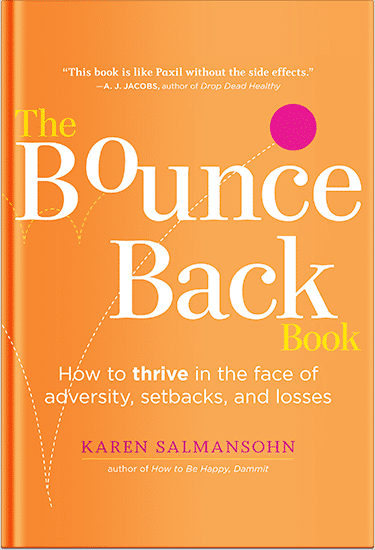 Your home might harbor more hidden dangers than you realize. Statistics show that over half of all injury-causing accidents happen inside our homes. These hazards often remain unnoticed until an incident occurs. In 2023, local fire departments responded to an estimated 1.39 million fires in the United States.
Your home might harbor more hidden dangers than you realize. Statistics show that over half of all injury-causing accidents happen inside our homes. These hazards often remain unnoticed until an incident occurs. In 2023, local fire departments responded to an estimated 1.39 million fires in the United States.
The dangers don’t stop at fires alone. American homes face multiple safety challenges. Residential properties make up more than 60 percent of all break-ins. Swimming pools create significant risks, especially when you have young children. Most drowning incidents involving children between ages 1 and 4 happen in home pools. Carbon monoxide stands out as a silent killer because people can’t see or smell this deadly gas.
Let’s explore the hidden hazards that could be present throughout your home in this piece. We’ll help you spot everything from unstable furniture to dangerous chemicals and provide practical ways to protect your family from these everyday threats.
Everyday Hazards You Might Overlook
People often overlook common safety hazards at home until accidents happen. These everyday dangers need our attention because all but one of these falls occur in our homes. We move around without thinking about safety.
Unstable furniture and tip-over risks
The numbers paint a concerning picture. Between 2000 and 2006, at least 180 deaths related to furniture tip-overs occurred. Children under 10 accounted for 80% of these incidents. Kids under 5 face the highest risk because they climb furniture to reach objects. Bedrooms see the most fatalities (46%), and these accidents happen while parents think their children are sleeping. Here’s how to prevent these accidents:
- Anchor all entertainment units, TV stands, bookcases, and bureaus to walls with proper hardware like brackets or toggles.
- Place televisions on sturdy furniture or mount them directly to the wall
- Keep items that might tempt children to climb (toys, remote controls) away from furniture tops
Loose rugs, cords, and cluttered walkways
Regular household items can become dangerous tripping hazards. Studies show unsafe carpeting and rugs cause over 45% of home falls. People with visual impairments struggle with loose floor coverings and transitions between different flooring types. On top of that, cords create both tripping and strangulation risks.
You can reduce these risks by applying slip-resistant backing to rugs. Keep electrical cords close to walls and away from walking paths. Clean up spills right away to prevent slippery surfaces.
Exercise equipment and garage door dangers
Emergency departments treated nearly 21,000 children nationwide in 2019 due to home exercise equipment. Treadmills, stationary bikes, and weights can cause serious injuries like friction burns, finger amputations, and head trauma.
Your garage door, the largest moving object at home, can cause serious injury or death if it malfunctions. Here’s what you need to do:
- Set up a separate workout space that restricts children’s access
- Unplug exercise equipment after use and store cords safely
- Check that garage door openers have working auto-reverse mechanisms and photo eyes
- Install garage door opener controls at least 5 feet from the floor where children can’t reach them
A safer home environment starts with understanding these common household hazards.
Fire and Heat-Related Dangers
Fire emergencies affect thousands of homes each year. Electrical failures alone cause 47,700 home fires annually in the U.S. These tragic events lead to 418 deaths, 1,570 injuries, and $1.4 billion in property damage. Beyond the immediate destruction, survivors often face severe burn injuries with long-term consequences – settlements can range from under $10,000 for first-degree burns to $25,000–$75,000 for second-degree burns, while third- and fourth-degree burns may exceed $100,000 and sometimes reach into the millions (source). Learning about household fire hazards can save lives.
Dryer lint and appliance overheating
Dirty dryer lint causes 31% of clothes dryer fires in homes. Firefighters rush to about 13,820 home fires started by clothes dryers yearly. You might notice warning signs like clothes that take too long to dry, items that feel too hot after drying, or machines that shut off unexpectedly. Clean the lint filter before each use to stay safe. Remove lint around the drum and clean lint from the vent pipe yearly.
Space heaters and candle safety
Space heaters started about 1,600 house fires yearly between 2019 and 2021. These fires killed around 70 people each year. Put space heaters on flat surfaces at least three feet away from anything that burns. Avoid using extension cords or power strips with heaters because they can overheat.
Candles start about 5,910 home fires annually and cause 74 civilian deaths and 558 injuries. Flammable items placed too close to flames start half of all candle fires. Use sturdy holders and never leave burning candles alone.
Holiday lights and overloaded outlets
Holiday lighting starts hundreds of home fires yearly. Make sure you use lights tested by safety labs like Underwriters Laboratory (UL). Smart timers can help control energy use and lower fire risks.
Overloaded circuits start many residential fires. Watch for signs like flickering lights, frequent breaker trips, warm wall plates, and buzzing sounds from outlets.
How to create a home fire escape plan
Smoke alarms give you less than 2 minutes to escape. Map your home and mark all exits. Find two ways out of each room and pick a meeting spot outside. Practice your escape plan twice a year. Everyone should get out in under two minutes. Put smoke alarms on every floor and in bedrooms. Test them regularly.
Toxic and Chemical Household Hazards
Your home might harbor dangerous toxic substances that you don’t notice every day. Let’s get into the most dangerous chemical hazards you need to know about.
Household chemical hazards in kitchens and bathrooms
The chemicals in everyday cleaning products can cause skin irritation, infections, burns, and breathing problems. Chlorine, ammonia, and iodine stand out as the most common chemicals used to clean and sanitize. Mixing bleach with products containing ammonia creates toxic gasses that lead to chronic breathing issues or death. You can use safer options like baking soda to scrub or a mix of vinegar and water to clean glass.
Button batteries, magnets, and small object risks
A swallowed button battery damages tissue severely within two hours. A child ends up in the emergency room every three hours after eating a battery. If your child swallows a button battery, rush to get medical help and call the battery ingestion hotline (1-800-498-8666).
High-powered magnets pose another threat. These magnets attract each other through intestinal walls when swallowed and cause holes, twisting, or blockage. A newer study, published in, reveals that hospitals admitted more than half of children who swallowed high-powered magnets.
Poisoning from medications and vitamins
Children face the highest poisoning risk from medicines. Keep all medications, vitamins, and supplements out of children’s reach. Note that vitamins can poison in large amounts, with iron or calcium presenting the most serious dangers.
Carbon monoxide and gas appliance safety
People call carbon monoxide (CO) the “invisible killer” because you can’t see or smell it, and high levels can be deadly. CO poisoning claims more than 150 lives yearly in the United States from accidents unrelated to fires. Your home needs CO alarms outside every sleeping area and on each level. A professional should check your gas appliances once a year to prevent dangerous CO exposure.
Outdoor and Environmental Safety Hazards
Outdoor hazards can be just as dangerous as indoor ones. Your external spaces have unique environmental risks that need specific safety measures.
Storm, wind, and hail damage prevention
Regular maintenance is key to protecting your home from severe weather. You should trim trees and remove dead branches that might become projectiles in high winds. Clean gutters and downspouts regularly so water drains properly and prevents damage. Your roof needs regular checks for loose or damaged shingles that require immediate repairs. When storm warnings occur, store or secure all outdoor furniture, tools, and toys to prevent them from becoming dangerous projectiles.
Pool safety and drowning prevention
Drowning ranks as the leading cause of death among children ages 1-4. Your pool needs a four-sided fence at least four feet tall that completely separates it from the house with self-closing, self-latching gates. Children need constant supervision near water since drowning happens quickly and silently. A responsible adult should be the designated “Water Watcher” who focuses solely on supervising children in the pool. Learning CPR is crucial because bystanders often reach drowning victims first.
Toxic plants and garden chemicals
Garden plants often contain toxins harmful to humans and pets. You should identify dangerous plants in your yard by calling your local Poison Help Line (1-800-222-1222). Store pesticides, fertilizers, and other garden chemicals away from children’s reach. Children and pets should stay off treated lawns for at least 48 hours after chemical applications.
Securing outdoor play equipment
Home playground equipment injuries send about 50,000 children to emergency rooms yearly. Set up play equipment on level ground away from obstacles. Play structures need firm anchoring to stay stable. Check equipment regularly for loose parts, sharp edges, or splintering surfaces. Shock-absorbing materials like mulch or wood chips should cover the ground under play areas to protect against falls.
Conclusion
A safe home needs constant alertness and active protection against the many hazards we’ve discussed. Every room and outdoor space can hide dangers that only become obvious after an accident happens.
Being aware is the key to safety. You need to spot possible risks in your living spaces as the first step to prevent accidents. Those stable-looking furniture pieces, unsecured rugs, and messy walkways can cause serious falls. Like other everyday items, dryer lint, candles, and space heaters can become deadly fire hazards when left unchecked.
Toxic and chemical substances are just as dangerous, particularly around children and pets. Common items like cleaning supplies, medicines, and even tiny button batteries can poison or hurt someone internally. On top of that, outdoor areas come with their own risks – from drowning hazards to toxic plants and playground accidents.
Here’s the bright side – you can prevent most household accidents. Simple steps can reduce risks by a lot. These include securing furniture, putting up proper alarms, keeping chemicals locked away, and having emergency plans ready.
Note that staying safe isn’t about constant fear. It’s about making smart choices to protect what you care about most. Your home should be a safe place where everyone feels protected.
Look around your home today with fresh eyes. Spot the dangers and fix them right away. This quick check could end up saving lives. You don’t need big renovations or expensive gear to make your home safer – just pay attention to spaces where dangers might hide.
P.S. Before you zip off to your next Internet pit stop, check out these 2 game changers below - that could dramatically upscale your life.
1. Check Out My Book On Enjoying A Well-Lived Life: It’s called "Your To Die For Life: How to Maximize Joy and Minimize Regret Before Your Time Runs Out." Think of it as your life’s manual to cranking up the volume on joy, meaning, and connection. Learn more here.
2. Life Review Therapy - What if you could get a clear picture of where you are versus where you want to be, and find out exactly why you’re not there yet? That’s what Life Review Therapy is all about.. If you’re serious about transforming your life, let’s talk. Learn more HERE.
Think happier. Think calmer.
Think about subscribing for free weekly tools here.
No SPAM, ever! Read the Privacy Policy for more information.
One last step!
Please go to your inbox and click the confirmation link we just emailed you so you can start to get your free weekly NotSalmon Happiness Tools! Plus, you’ll immediately receive a chunklette of Karen’s bestselling Bounce Back Book!


 Your home might harbor more hidden dangers than you realize. Statistics show that over half of all injury-causing accidents happen inside our homes. These hazards often remain unnoticed until an incident occurs. In 2023, local fire departments responded to an estimated
Your home might harbor more hidden dangers than you realize. Statistics show that over half of all injury-causing accidents happen inside our homes. These hazards often remain unnoticed until an incident occurs. In 2023, local fire departments responded to an estimated 